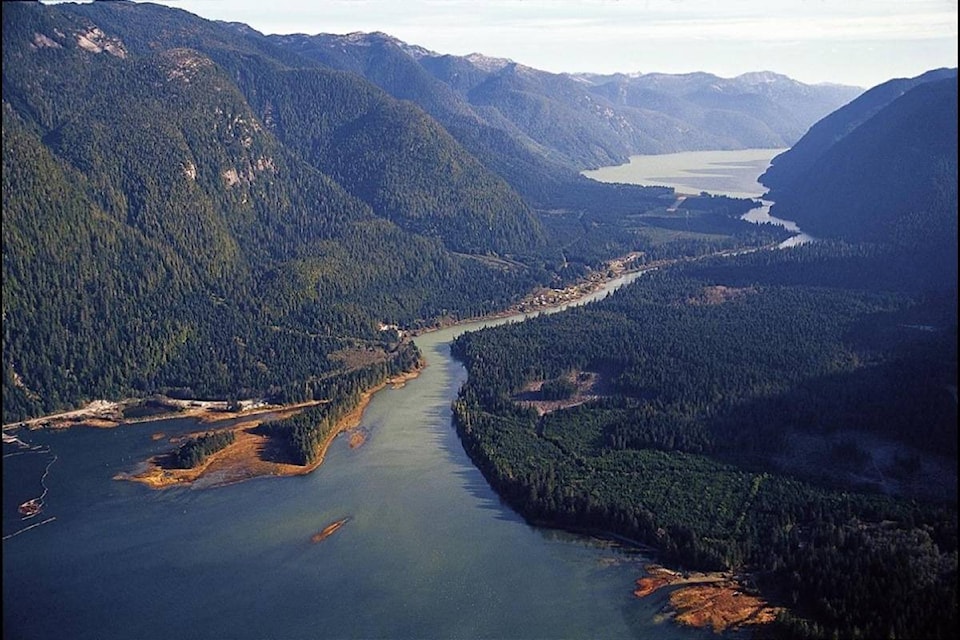Residents of Wuikinuxv Village have been successful in their bid for funding to build a hydroelectricity facility in their remote community on the central coast. The community houses approximately 80 people on-reserve and is located on the banks of the Wanukv River. Accessible only by float plane or boat makes life there challenging, and as such the majority of the Wuikinuxv population lives off-reserve in nearby communities of Port Hardy and Campbell River.
Like Bella Coola, the Wuikinuxv people depend on diesel year-round to power their community. Unlike Bella Coola however, there is no relief in the form of hydroelectric power, which Bella Coola enjoys via the Clayton Falls generating station during certain months.
Back in 2009 Bella Coola was the site of a ground-breaking hydrogen assisted renewable power project - the Hydrogen Assisted Renewable Power System - or HARP project. The project was a small-scale demonstration project which tested hydrogen production, storage and fuel cell components. During this testing, renewable energy from the Clayton Falls hydro station was used to produce hydrogen, which was stored and used in fuel cells to offset diesel generation during peak load periods.
“The deployment and testing period of the HARP system in Bella Coola is now complete,” said Bob Gammer, BC Hydro Manager, Northern Community Relations. “Testing proved that the HARP system is not ready for full deployment in a utility environment, where reliability of equipment is critical. Further study is needed on the integration of distributed generation and controls for microgrids in a laboratory setting. In late September 2013 the equipment was relocated to PowerTech Labs in Surrey and has been used in various research projects since then.”
In 2017, Bella Coola burned an average of 196,716 litres of diesel per month. The consumption varies widely depending on the time of year, but there is no time when the generator is not employed. BC Hydro said it has no plans to expand the hydro power capacity at Clayton Falls or to expand hydro power generation at other sites in the Bella Coola area.
“Fuel consumption amounts change from year to year depending hydro generation at Clayton Falls, weather conditions, and how much power customers use,” said Gammer. “The lowest annual diesel consumption in the last five years was 1,731,535 litres in the fiscal year ended on March 31, 2015. In the 12 months ending March 31, 2017 consumption was 2.36 million litres, with a low of 64,000 litres in August and a high of 392,000 in December and January.”
Three years ago Wuikinuxv residents said that paying for the fuel was pushing their band into debt and forcing them to “cannibalize” other programs to feed their every-hungry generators. Houses and roads have fallen into disrepair because all the band’s money goes toward generator diesel and maintenance.
“Everything breaks down. The wear and tear on them is constant,” said Frank Johnson, former long-time chief of Wuikinuxv. Johnson said power as been an issue as long as he can remember. One particular outage in the late 1970s lasted seven months, during which the community had throw out all their food and children attended school with no lights, power, or heat. The Wuikinuxv community has also been struggling with diesel emissions and noise from generators, as well as environmental concerns over transporting and storing the fuel.
Klemtu made the transition to hydroelectric power decades ago with a micro-hydro system it built in the late 1970s. That same plant still powers the town of 360 and runs a seafood processing plant, and is credited for providing the community with its self-sufficiency. It costs each household only $47 per month to run; the back-up generator costs $500 per hour.
In 2014 the Wuikinuxv had hoped to access funds from BC Hydro’s Remote Community Electrification Program to build a new hydroelectric station, but that funding was cancelled. This past spring however, they were informed they would receive funding for the run of river Nicknaqueet Hydropower project through the provincial First Nations Clean Energy Business Fund.
The proposed project is a 350-kilowatt hydro-diesel hybrid that will be constructed on the Nicknaqueet River, 2.3 kilometres southwest of the Wuikinuxv Village at Rivers Inlet. It is the largest project to receive the funding and will provide the First Nation with $150,000 in diesel-displacement funding and $250,000 in equity funding. The hydro project is expected to replace 92 percent of electricity produced in the community by diesel generators.
The Wuikinuxv project is supported in part through the Diesel Displacement Fund, part of the First Nations Clean Energy Business Fund, which will provide approximately $700,000 a year during the next three years to remote First Nations. The diesel-displacement funding is contingent on matched federal funding and is specifically aimed at supporting remote First Nations communities in reducing diesel use.
“Our community wants to end its reliance on costly, polluting diesel generators for our electricity,” said Wuikinuxv Nation Chief Rose Hanuse Hackett. “In partnership with the Province, this project is a positive step toward our shared goal of reducing greenhouse-gas emissions and creating affordable self-sufficiency for our Nation.”
